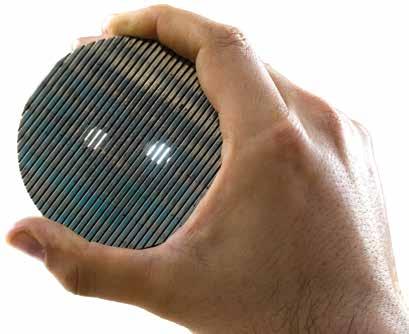
1 minute read
Detecting Pipeline Corrosion to Prevent Leaks

SwRI has created next-generation ultrasonic guided wave technology to detect anomalies in pipes, enabling users to prevent leaks before they start. The transducer uses SwRI-developed Magnetostrictive Sensor® (MsS®) technology.
“Pipeline corrosion resulting in leaks is very common,” said SwRI Staff Engineer Sergey Vinogradov, who led the development. “We’ve developed a technology that can consistently monitor the pipe’s condition, hopefully preventing leaks from happening.”
The Magnetostrictive Transducer (MsT) Collar, originally developed by SwRI in 2002, now has a lower profile allowing its use on pipes in tight spaces. In custom configurations, it can withstand heat up to
The MsT Collar propagates waves along an elongated structure, guided by its boundaries, to travel long distances with little loss of energy. Sometimes a single sensor can inspect hundreds of meters, though obstacles such as couplings would require additional sensors.
“The eight sensors in the transducer collect the full range of signals,” Vinogradov said. “Algorithms combine this information to better detect and locate the anomaly both axially and circumferentially. Corrosion growth can also be monitored by examining data sets acquired over time.”
The MsS system can send data to a remote terminal via a wireless transmitter unit or through a wired connection. It is designed primarily for oil and gas transmission pipelines to prevent costly and damaging leaks before they begin. However, the versatile technology supports other industrial piping systems.








